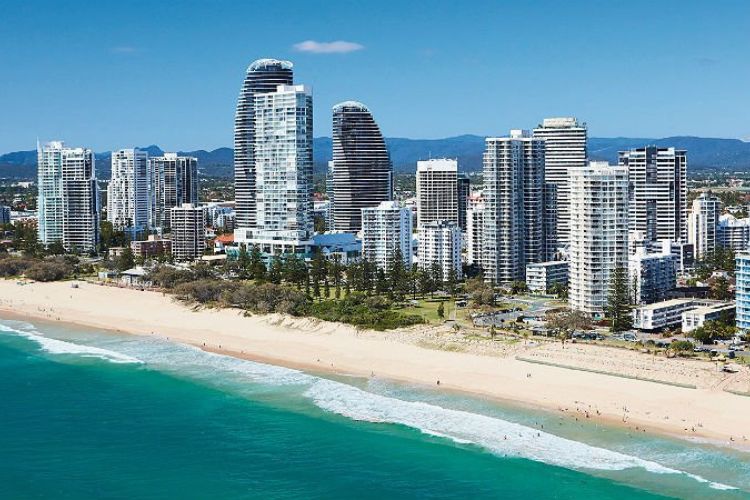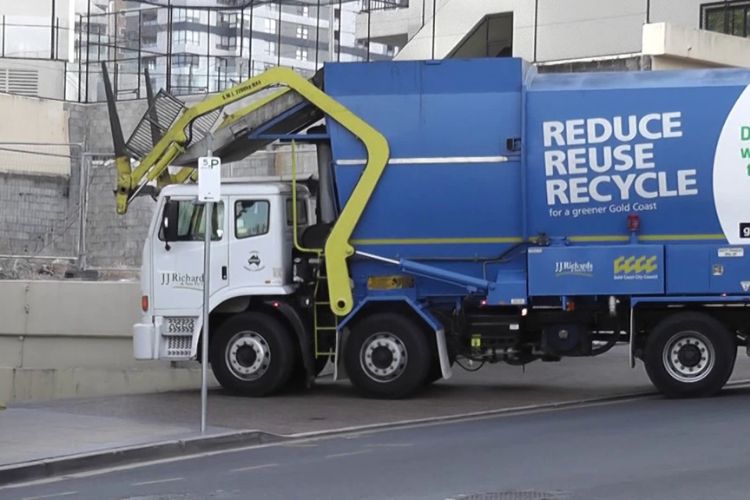How we manage our waste and recycling here in Australia is currently changing.
Governments are making huge efforts to ensure that our rubbish is both reduced and managed more effectively.
What does effective management of waste mean exactly? In short, that means that we should produce less waste, and the waste produced should be recycled as much as possible.
Current recycling figures are not as good as we want them to be. Most states in Australia are implementing big changes to ensure we run a circular economy as much as possible.

What is a circular economy?
A circular economy means that products and materials used by consumers and businesses alike are processed, repurposed and used again to create new products and materials.
In this way, we will reduce the use of landfill sites, which are not an eco-friendly disposal method.
This article puts the Gold Coast in the spotlight and looks hard at the facts and figures. How is the Gold Coast managing, changing, and improving its waste and recycling statistics?
How much waste is produced on the Gold Coast each year?
The Gold Coast is a beautiful and culturally important city located in the state of Queensland.
Each year, the inhabitants of the Gold Coast produce around 1.3 million tonnes of waste. The waste comes from households, businesses and construction.
Household waste makes up the bulk of the rubbish which is generated.
How much of this waste is recycled?
The amount of waste recycled on the Gold Coast varies, but the current level of recycling on the Gold Coast is around 34%. Householders recycle around 80,000 tonnes of materials into their council bins.
What are the most common items that are recycled?
As with the rest of Australia, metal is one of the most commonly recycled materials. This is because metal retains value – meaning people are more open to recycling it. After all, they get paid for their efforts.
Other commonly recycled materials include paper and cardboard, as well as plastics.
What are the most common items that are sent to landfill?
Unfortunately, some of the most common items in landfills cause ecological problems.
Organic waste, such as food and green waste, is often sent to landfills, and as it produces harmful gases, this needs to change very soon.
How much waste is produced per person on the Gold Coast each year?
The amount of waste produced per person each year will vary seasonally, and other factors will come into play – for example, each person’s economic situation.
But it’s thought that each person produces around 1.2 tonnes of waste per year. This includes all kinds of waste, whether recycled or not.
How does this compare to other Australian cities?
In Canberra, it is thought that people produce double the amount they produce on the Gold Coast as individuals.
What initiatives are in place to increase recycling rates?
The City of Gold Coast has made strong efforts to improve issues with recycling and, in particular, the problem of commercial food waste.
The Commercial Food Recycling Service is part of the Gold Coast’s Solid Waste Strategy 2024. It helps commercial customers divert organic food waste away from landfills and into new systems that produce compost from the scraps.
Food waste represents as much as 50% of the waste produced by the hospitality industry.
The Solid Waste Strategy aims to make changes by –
- Actively involve the community and city staff in practical recycling and waste reduction programs.
- Diverting identified priority waste from landfills, especially organic waste. Organic waste includes garden waste, food waste, timber and cardboard.
- Providing more recycling options in public places, for medium to high-density housing, business premises and at major events.
- Planning ahead to build cost-effective, best-practice waste and recycling infrastructure that will meet predicted demand.
- Implementing best practice collection services and waste facilities that meet the community’s needs, as well as financial and environmental factors.
What are the challenges associated with waste management on the Gold Coast?
Compared with a city of similar size, such as Canberra, the Gold Coast produces similar waste. Canberra produces just over a million tonnes of waste a year, but as it is slightly larger, this means that Gold Coast is lagging behind somewhat.
Associated Costs
The costs of waste management are varied, and for the government, they include the following:
- Transportation and collection
- Storage
- Processing
- Training and Education
For householders, most of the costs associated with waste management are absorbed into the council rates, which cover their weekly bin collection.
However, if households produce more waste than is manageable with council bin collections, then there may be some other costs, including the following:
- Skip bin hire
- Dump charges
- Trailer hire
Skip bin hire is not expensive; however, affordable skip hire can be cheaper than dump runs, which consume fuel and time in addition to dumping charges.
For a list of the best skip bin hire companies on the Gold Coast with reviews and costs, please visit this page.
You’ll find information about the Council Permits for the Gold Coast Councils here. Council permits are only needed if skips are to be parked on public land. No permit is needed if a skip bin is placed on private land.

Environmental Impacts
With so much waste going to landfills, changes must be made as soon as possible.
Landfills produce dangerous and toxic gases and liquid waste that can affect the local ecosystems and leak into the water table.
Other issues include microplastics, which can find their way into water sources and the sand on the beach, as well as damaging animal and plant life.
Waste and Recycling Trends on the Gold Coast
Trends and new opportunities in waste and recycling on the Gold Coast include a general effort to avoid single-use plastics such as shopping bags, straws, takeaway food containers and plastic packaging.
These are being replaced with metal and bamboo, cloth and beeswax. These materials are far kinder to the environment and safer because they contain no harmful chemicals.
What can I do about it?
Making big changes always starts with the individual. It’s easy to look at the statistics and at the problems and feel that they’re too big to alter.
However, if everyone makes an effort to change how they consume, things can and will improve quickly.
Move away from plastic, and start recycling and reusing. Try to keep your general waste bin as empty as possible – the bin goes to landfill.
If you need assistance with a larger amount of waste, consider skip bin hire. Booking is easy – enter your postcode, choose your waste type and bin size, and that’s it. You can book a skip to be delivered by tomorrow!
Final thoughts and key takeaway!
The Gold Coast’s leaders and decision-makers are implementing change, and the changes are proving successful.
Waste and recycling need to improve, and the big question remains – will we change things fast enough to make lasting improvements to our environment for future generations? The environment in which we live needs to be protected for everyone’s health and for safeguarding our ecosystems.
If the current signs are correct, then we think change is possible and is already visible.
Residents of the Gold Coast who responsibly manage their waste and make good choices when it comes to disposal are actively helping in the efforts to keep the Gold Coast clean and beautiful.
